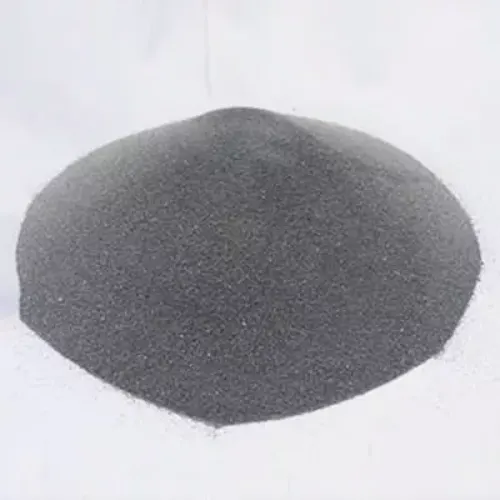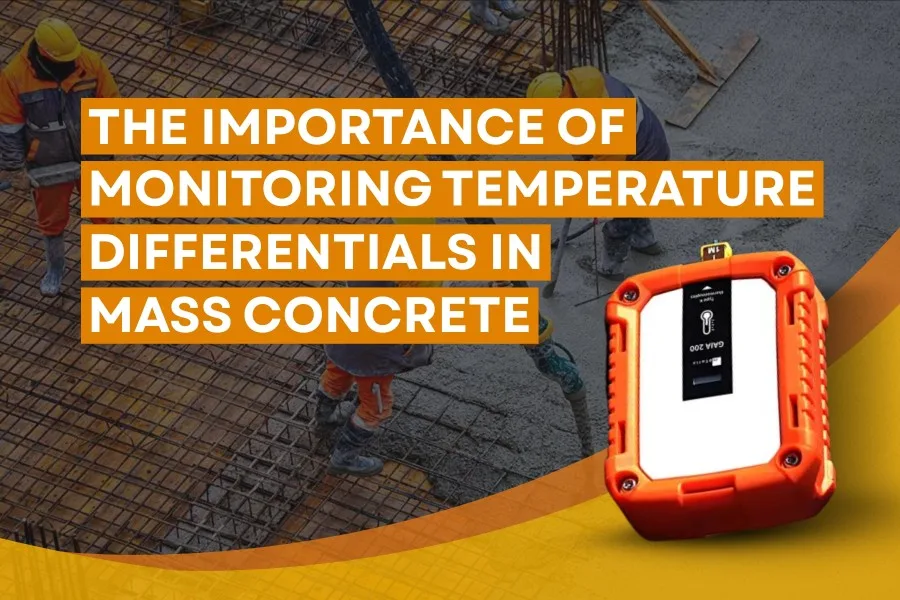Introduction
Mass concrete is an important component of major construction projects, particularly when creating foundations, dams, bridges, or massive walls. Because of the mass, mass concrete requires managing its heat and cool cycle appropriately if a structure is to provide proper and/or intended longevity.
If internal heat (stress) impacts and temperature aren’t managed properly, it will result in cracking, reduced strength, and long-term structural performance and integrity issues.
Table of Contents
A structure designed and built using mass concrete will have relatively higher volumes of concrete versus a high-strength structure that levels the same volume of concrete per (or short) stay in a form (a floor system).
In this guide, we will address what mass concrete is, why thermally monitoring a mass concrete placement is important, how mass concrete behaves thermally, and how to ameliorate the changes thermally.
We’ll also discuss why both hot and cold weather conditions will influence your thermally monitored placement, and how various chemical admixtures (Polycarboxylate Ether (PCE) Superplasticizers) can assist with issues related to the mass of concrete.
What is Mass Concrete?
Mass concrete can be defined as any concrete that is a large volume for placement and/or will create significant heat settings.
Mass quantities of concrete typically refer to any unit of concrete that is resistant to change in temperature because the concrete is a bulk product, namely foundational systems, bridge piers, or tall and massive retaining walls.
An example would be a transitional piece of a bridge that has significant foundations and substantial height (pier) that prevents the exothermic reaction of heat within the budget from escaping quickly from the rest of the mass of concrete.
When concrete hardens, it goes through a series of chemical reactions, including hydration and exothermic reactions commenced by adding water to cement.
When mass concrete hardens, the core temperature of the interior could exceed that of the outer temperature on the exterior because the outer portions of the structure cool faster than the interior.
Though the temperature difference may not seem great, in concrete, it can be quite dangerous as temperature differences can create thermal stresses when they expand and contract out of order.
When thermal stresses exceed the tensile strength of the concrete, cracks will form. This is why monitoring curing temperature is so important.
Why is Monitoring Mass Concrete Temperature Important?
The temperature directly affects the strength, durability, and overall performance of concrete. Too much heat can accelerate the curing too much, which can lower the ultimate strength of the concrete. Not enough heat will slow down the curing, and agai,n it weakens the structure.
If the temperature of the inside of the concrete is greatly different than the temperature on the surface or in the surrounding environment, the concrete will expand and contract in ways that create stresses within the concrete.
Those stresses can cause cracking. Cracks can lower the structural strength of structures and can result in leaking structures or steel reinforcements being exposed to moisture, causing corrosion, or straining the life of the structure.
Monitoring allows for real-time decisions by engineers, such as ways to change the curing methods, or ways to add admixtures to manage how the test reacts due to outside factors.
In mass concrete, where heat generated by hydration can be retained for much longer periods of time, monitoring is not a matter of luxury; it is part of a quality control plan.
How do Temperature Differentials Affect Mass Concrete?
Differentials are the differences in temperature between different locations of the concrete. In mass concrete, the center heats up from the exothermic chemical reactions when the concrete hydrates, while the cooler exposed surface is cooled by exposure to the air and losing moisture.
If the core heats significantly hotter than the surface, there will expand further than the cooler surface and will result in stresses.
It is only when the core cools down and starts to contract that the differences in expansion will result in tensile stresses that can exceed the capacity of the concrete to resist those stresses. The tensile stresses cause the concrete to crack.
These cracks are not a cosmetic issue. They reduce the ability of the concrete structure to carry loads, and allow moisture infiltration, which can soon undermine the entire structure.
Keeping temperature differentials in check during the curing process is not just best practice, but essential. Stresses caused by differentials rarely appear until the structure is out of service; thus, monitoring for the early detection helps mitigate the costs of repair in the long term.
What is the Best Way to Monitor Temperature Differentials?
The best way to monitor temperature in mass concrete is by incorporating embedded sensors class, and when the concrete is poured.
The temperature probes or embedded temperature sensors, if temperature probes are not utilized, will be discrete units, either thermocouples or digital data loggers, that can be monitored at varying depths (core, midsection, surface,) allowing the temperature profile of the curing concrete to be tracked throughout the curing period.
The data are then collected and are either reviewed in spreadsheets or analyzed with software to flag potentially dangerous spikes or rapid temperature changes. Real-time monitoring systems like Maturix even allow remote access to the data and alerts.
Using the amassed data, the contractor can react immediately to issues should they arise. The contractor may opt to add more insulation, hold off on removing forms to a later date, or modify the concrete mix to tailor heat generation.
Why are Temperature Differentials in Mass Concrete so Important in Winter?
Cold weather creates an array of problems when dealing with mass concrete. For example, the low ambient temperatures can cause delays to the hydration rate of concrete through the temperature of mass concrete, therefore can cease to gain strength. Freezing temperatures can impact the integrity of the fresh concrete.
In winter, the surface temperature cools rapidly while the core is still warm. The large differential can be problematic, particularly since we can exceed normal thermal gradients – usually these are 20-25 or 36-45F.
By consistently recording the cold and hot temperatures, the contractor can apply insulating blankets, heated enclosures, or accelerators to ensure a slower differential in curing.
Another consideration for contractors is if they have any frozen concrete, which can cause delays on the construction schedule, but may also lead to weak bonding, as well as permanent weaknesses. In worst cases, thermal cracking may show before the actual structure is in service!
Why are Temperature Differentials in Mass Concrete so Significant in Summer?
In summer, we face the opposite challenge as in the winter; we have to deal with excessive heat. High ambient temperatures and solar radiation can cause mass concrete to become extremely hot on the surface while at the same time the temperature in the interior is still warming up.
If the temperature rise is excessive and hydration is accelerated due to the heat, the concrete will have a brittle and weak finish. In high heat, the water evaporates faster, which also affects the hydration.
Thermal gradients will also become more extreme, particularly if the concrete is placed during peak sunlight hours.
With heat, contractors will either pour in the cooler times of the day, try to keep the surface of the slab cool using surface cooling methods, or use retardants to extend the working time of the concrete.
Temp monitoring is critical in hot weather to limit excessive evaporation and the potential for drying and surface cracking.
Chemical Solutions to Influence Difference in Temperature in Mass Concrete
There are a number of chemical admixtures that may help to mitigate temperature effects during concrete hydration and curing when mass placements occur:
1. Retarders (Hot Weather Admixture)
Retarders are additives used in high temperature environments to slow the hydration process. This extended the amount of time in which concrete would begin hardening an was useful to minimize thermal cracks produced by rapidly rising temperatures. Retarders are great for summer pours or in climates with relatively high ambient temperatures.
2. Accelerators (Cold Weather Admixture)
In cold climates, accelerators are added to the mix to accelerate the hydration process. This leads to early strength that is able to limit freezing damage. There are some other benefits to using accelerators as well.
They provide those who place concrete in the winter a more efficient process, by reducing the duration of protection and insulation.
3. Shrinkage Reducing Admixtures (SRA)
These allow for less drying shrinkage, which is also a source of cracking, especially with temperature stresses. Less shrinkage leads to better crack resistance and higher durability.
Related Post: What is the Best Way to Fix a Concrete Shrinkage?
4. Micro Silica / Silica Fume
Silica fume is a very reactive pozzolan improving density and strength; this reduces the permeability of concrete, making it less susceptible to water infiltration. From a thermal standpoint, silica fume helps moderate the heat developed from hydration.


5. Polycarboxylate Ether (PCE) Superplasticizers
PCE superplasticizer improves workability without adding water to the mix. This means strength and durability are preserved. In a mass concrete placement, PCEs lead to better compaction and flow, which leads to even heat distribution.
The mix remains fluid for a long period of time, making placement easier too, and less cold joints and inconsistencies. In addition, PCEs tend to be compatible with other admixtures, making PCE a very versatile way to manage temperature issues

Conclusion
Temperature differentials in mass concrete are not merely a best practice; they are an essential part of developing, ensuring, and maintaining the strength, safety, and longevity of any large structure made from concrete.
Whether you’re pouring mass concrete in the deep freeze of winter or sweltering in summer temperatures, understanding how concrete behaves when temperature variables change is the best way to prevent long-term effects from occurring.
With new technology, including temperature sensors and digital monitoring systems, paired with the right chemical admixtures, namely, Polycarboxylate Ether (PCE) Superplasticizers, we have the means and information to manage heat development and avoid cracking due to stress.
In summary, mass concrete is different than other concrete because of its size and the thermal implications that come with it.
If you have your temperature under control, you will ensure that the structure, while viable, maintains its integrity from the day it is poured, to decades later when it is still in use.
Sandip Agrawal, Polymer Engineer and MD of Sakshi Chem Sciences Pvt. Ltd., leads innovation in construction chemicals, shuttering oils, and industrial lubricants. With expertise in polymer science and eco-friendly solutions, he drives R&D and sustainable advancements, ensuring high-performance products for India and global markets.


